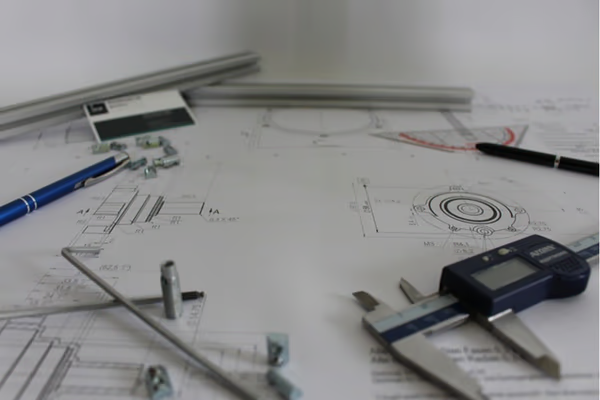Introduction: The United States Patent No. US1338343A is an essential paper in the scope of appreciation and invention engineering. US1338343 describes an invention that is of importance in many fields. In this article, we shall examine the details of this particular patent, its features, its impact, and its prospective usefulness. Ultimately, you will have learned much about patent US1338343 and its application in the current technological environment.
Background of the Invention US1338343A
Artificial fog has progressed as a skill almost exclusively in the US1338343A patent application filed December 10, 1917, and granted April 27, 1920, the proportional on free. In this case, inventors Paul Weiss and Jules Verdier sought to produce thick, dense clouds, fogs, or mists for many areas militarily. One can, however, appreciate the importance of Goodfellow, industry, and the zeal to come up with practical fog cover methods that, during wartime, became paramount in smoke screen warfare. This invention is especially about nebulizing anhydrous chlorides in moist ammoniacal surroundings, thus making many thick fogs possible.
Such technologies appeared in great demand because they provide visual cover essential for spearheaded military strategy. The logic behind producing fog in the first place was not only to shelter the soldiers but also to block sites of enemy visual interfacing with equipment. The US1338343A patent can readily be shown to address such needs very well, with probably more inventiveness and ingeniousness.
Characteristics of the Developed Product
The apparatus described in the US1338343A patent consists of two main components: Anhydrous chloride stored in one steel flask, while the other contains ammoniacal gas under pressure. This arrangement enables one to atomize the chloride in the chimney where there is a strong downdraft. The process is characterized by a high utilization rate of fog with little ammoniacal gas being formed.
The design allows for the introduction of HA gas or SA and improves the atomization process and fog opacity. This versatility makes the product usable at different times, including military operations.
Applications of US1338343A
The invention claimed by the US1338343A patent can be used in various industries ranging from communication technology to automotive engineering. Key areas include:
- Military Operations: This acid is primarily used to generate smokescreens in military operations. With this technology, movements and equipment from the enemy side are made unseen by troops on the other lines.
- Entertainment Industry: It is widely used in theatrical performances and movie productions, generating special effects wherever an environment is needed.
- Environmental Simulations: This technology allows researchers to make a controlled area foggy and can also benefit meteorological and ecological studies.
- Safety and Training: Firefighters can prepare in obscure regions, which is very common, even if they encounter foggy conditions that make their work difficult.
Importance of Innovation in Engineering
The US1338343A patent is good to show in a class on engineering or invention as it flags the critical theme in engineering – the need to invent. The inventors created the method of producing them toe inventors created the method of producing them to solve specific problems in the military and industrial usage of artificial mists. This invention enhanced subsequent technologies and witnessed future developments in fog production methods. Engineering change is fueled by innovation, leading to advancements in the solutions to current problems. The fact that HEL has the potential to provide dense fog rapidly fills a crucial practical role in safety, security, and entertainment, thus illustrating Edwards’ thesis about engineering.
Challenges and Considerations
It has been seen that the US1338343A patent, with its features, is beneficial in many ways, though some issues need to be looked into. The environment is unpredictable when applied to the products through chemicals like hydrochloric acid. Press on these substances must be regulated to avoid misuse by practice in the fields they are used to reduce maximum application. Moreover, the situation of the apparatus in different circumstances must be assessed. It is essential that the possibility of hazardous chemical reactions in operating mode be controlled. These are some of the issues that need to be addressed if the technology is to be used safely and effectively.
Conclusion
As mentioned above, the US1338343A patent indicates the incredible innovation in fog production used in the modern world. He also described how it demonstrates the mastermind of its designers and the functionality of the products they have developed. As a result of allowing the production of artificial mists to be optimal, this invention has applications in virtually every industry, particularly in the military and entertainment fields. Realizing the importance of the US1338343A patent will also spur further development of more related technologies. Following the development of industries, this patent’s fundamentals may open up solutions to present-day problems.
Final Thoughts
The invention of the US1338343A patent reveals the spirit associated with human innovation. Thus, this patent opens the door to engineering and technology prospects for meeting the requirements needed for fog production. The experience accrued during the invention can be helpful in future inventors and engineers seeking ways to create ideal products.
FAQs
Here are some frequently asked questions regarding the US1338343A patent, its implications, and related topics.
Q1. What is the US1338343A patent?
The US1338343A patent is an improved method and apparatus for creating thick artificial clouds, fogs, or mists.
Q2. Who is the owner of the US1338343A patent?
The inventors of the patent are Paul Weiss and Jules Verdier.
Q3. How is US patent 1338343A similar to the Australian patent?
Two patents protect the use of similar mechanisms for generating artificial fog, whereas one or more claims in the two patents are likely to differ.
Q4. To what industries can the patent US1338343A be used?
The patent can be employed in the military, entertainment, environmental simulation, and safety training markets.
Q5. Why is the US1338343A patent of so much importance?
It signifies a new revolution in the production of fog technology to meet practical challenges in use.
Q6. Are there problems concerning the US1338343A patent that need to be addressed?
Although this could be the case, the environmental and safety implications of the chemicals used in the process must be considered.
Q7. What are the similarities between US1338343A and US1334383A?
The patents may vary in the process used, the applications, or the statements regarding fog creation.
Q8. Who can grant me more knowledge on the subject of the US1338343A patent?
Clarity can be obtained from persons with expertise in chemical engineering, patent law, or any other field working in the chemical industry.
Q9. What does inventiveness come in the light of this patent US1338343A?
The patent demonstrates innovation by proposing a new way to fabricate artificial mists, enhancing engineering and technology fields.
Source: Google

